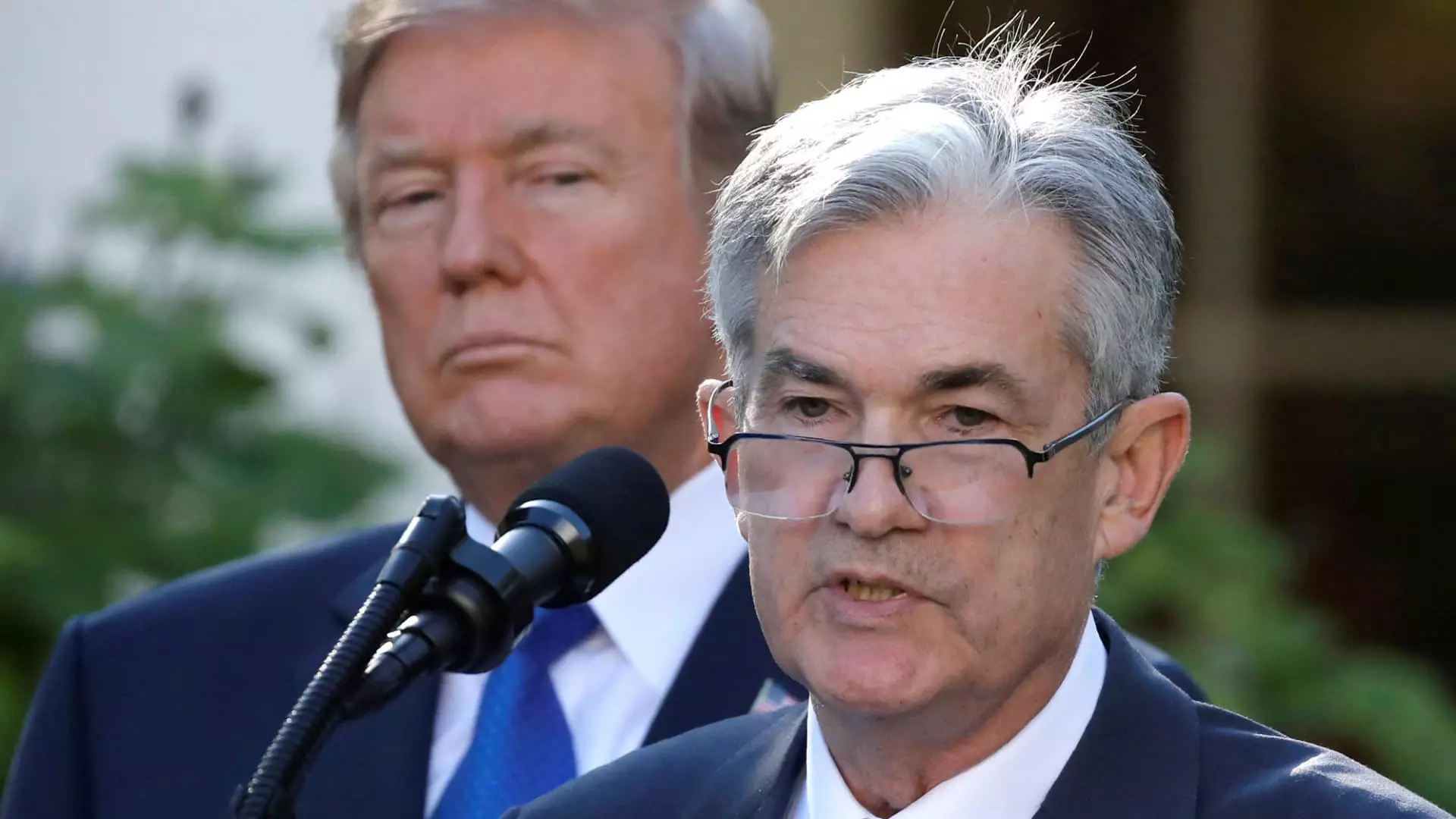In recent weeks, the spotlight has returned to the Federal Reserve, as the chair, Jerome Powell, faces unprecedented scrutiny from various political factions. President Donald Trump has vocally criticized Powell for the high federal funds rate, arguing forcefully that it constricts businesses and consumers alike, ultimately weighing heavily on the broader economy. Despite this political clamor, the Fed is expected to maintain interest rates during its upcoming meeting, signaling a steadfastness that some view as essential and others deem as politically motivated inertia.
These political pressures expose the inherent fragility of Federal Reserve independence. The supposed neutrality of monetary policy is being jeopardized by outside influences, which could have dire ramifications. This issue unearths a larger dilemma: how should economic leaders maintain their independence while being subject to intense political scrutiny? Powell’s ability to remain steadfast could either bolster confidence in the Fed’s commitment to its dual mandate, or it could ignite further political backlash that seeks to undermine institutional integrity.
The Reality of Economic Strain
High interest rates, coupled with persistent inflation, are creating an environment that is increasingly difficult for many Americans. Matt Schulz, chief credit analyst at LendingTree, succinctly describes this predicament: “Most Americans don’t have a ton of wiggle room and today they have even less.” The financial burden weighs heavily on consumers who are already struggling with rising prices for daily goods, making it clear that the Fed’s decision to keep rates steady could extend the period of economic hardship for many families.
The Federal Reserve’s role in shaping the borrowing landscape cannot be understated. While the fed funds rate dictates what banks charge each other for lending, it ripples through to the rates consumers face on everything from credit cards to mortgages. Credit card debt, often a lifeline for many, is now straining budgets. Variable rates tied directly to the Fed’s actions have crept up, with the average annual percentage rate surpassing 20%. This creates a dire reality for those who are already financially overextended, rendering the usual avenues of financial maneuverability less accessible.
The Ripple Effects on Everyday Borrowers
Consumers grappling with substantial debt must navigate a perplexing web of options. Schulz advises that individuals can take proactive steps, such as transferring balances to lower-APR credit cards or consolidating high-interest debt. Financial empowerment, he suggests, lies within the borrower’s control more than they might realize. This dynamic demonstrates a critical paradox in economic recovery: even as governmental and institutional forces decide on broader monetary policies, individual borrowers have the capacity to mitigate personal financial pain through informed decisions and resourcefulness.
The continued pressure on the housing market is another source of economic distress, adding another layer of complexity for prospective homebuyers. With mortgage rates stagnating near 6.9%, the dream of homeownership fades amidst growing inventories and affordability issues. Schulz succinctly notes that “those shopping for a home this summer should expect rates to remain relatively high.” Unfortunately, an ongoing inventory shortage only exacerbates the issue, leaving many would-be homeowners caught in a frustrating cycle of soaring costs and limited options.
Impact of Policy Decisions on Auto Financing
Beyond housing, the automotive sector is also feeling the weight of these economic pressures. While auto loan rates are traditionally fixed and less influenced by the Fed’s decisions, rising car prices still burden consumers. The average rate for a five-year new car loan now hovers around 7.24%, representing an increase fueled by both inflation and shifting trade policies. Many households find themselves foregoing larger purchases due to inflated car prices, placing additional strain on their financial situations.
It remains crucial for consumers to shop wisely and seek competitive financing before making significant purchases. While this aspect of self-advocacy has always existed, it now presents an urgent necessity for those looking to navigate an increasingly prohibitive market.
A Hidden Silver Lining for Savers
Contrary to the burdens faced by borrowers, savers are enjoying a distinct advantage amidst the Fed’s rate decisions. While Americans grapple with rising costs, some individuals are reaping rewards from competitive savings accounts that yield above-average interest rates, currently hovering around 4%. As Greg McBride, Bankrate’s chief financial analyst, notes, this provides an opportunity for savers, including retirees, to earn substantially more if their money is wisely managed.
This juxtaposition underscores a critical theme in economic policy: the multifaceted effects of decision-making at the Fed. While some sectors suffer, others find opportunity; yet, the overarching narrative remains one of tension, where many Americans find themselves caught in the throes of economic insecurity. As the political theater unfolds around Powell and the Fed, it remains imperative that the conversation shifts from mere critique to understanding the complexity of the economy and the implications for everyday citizens.

